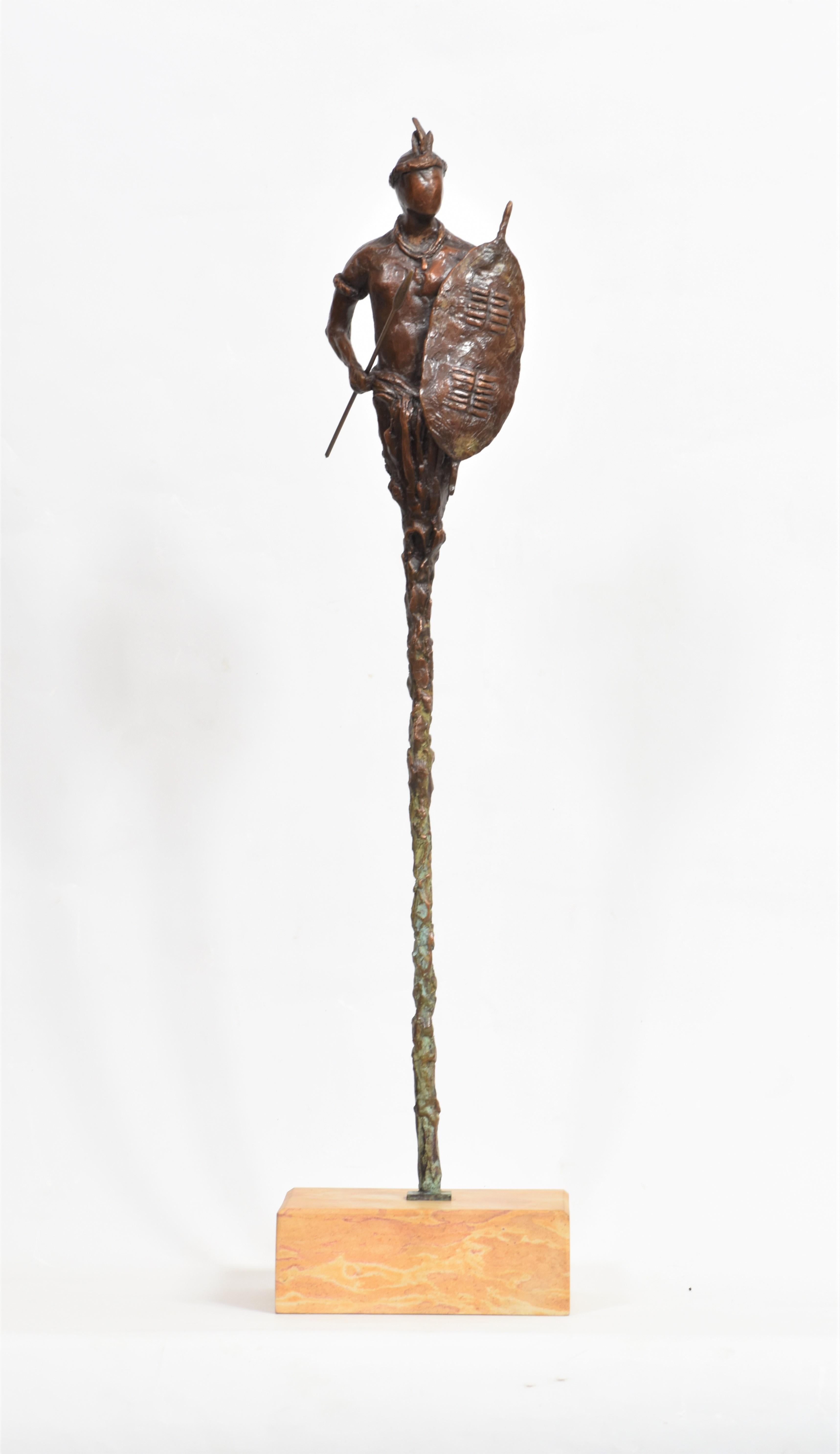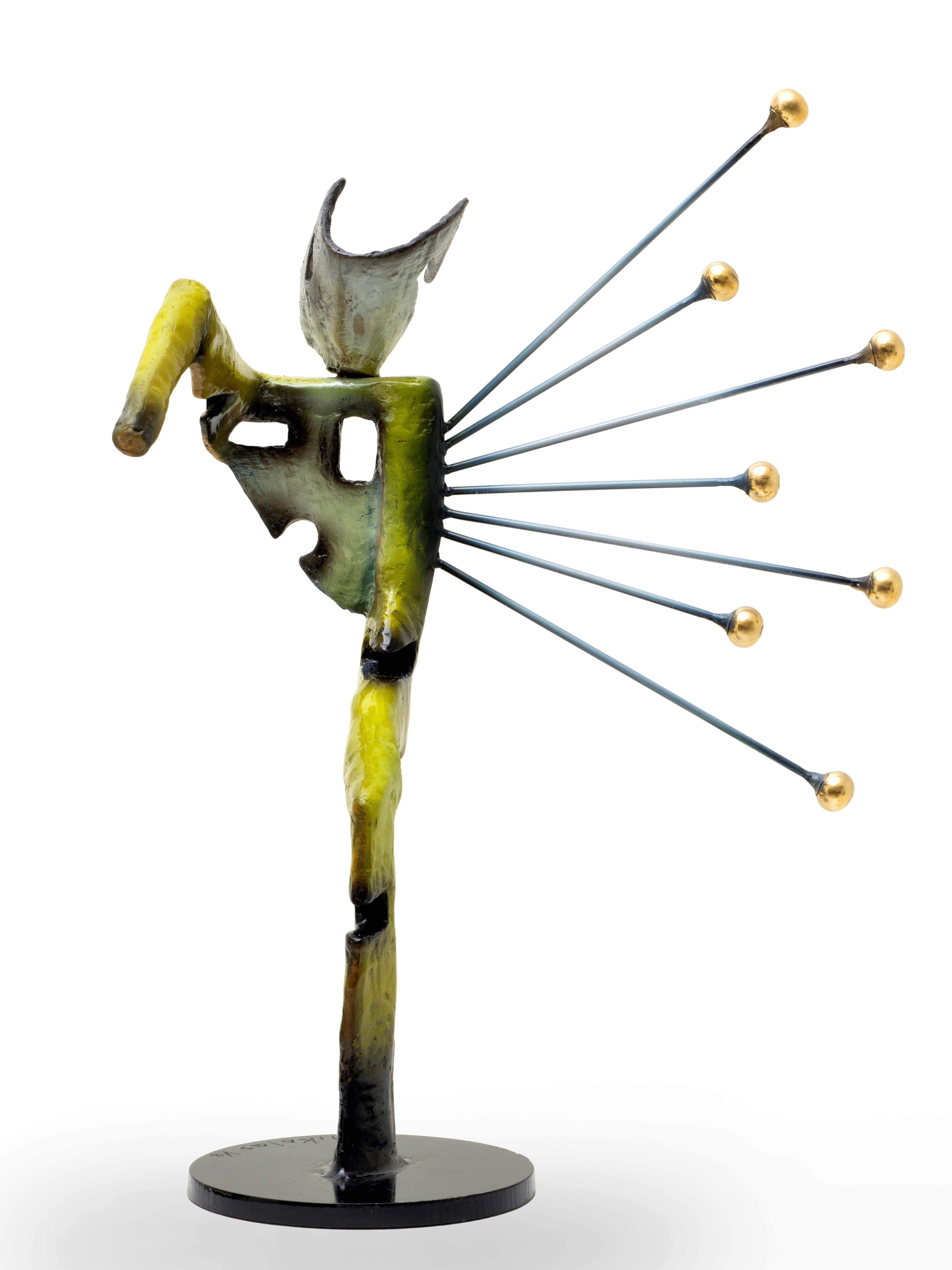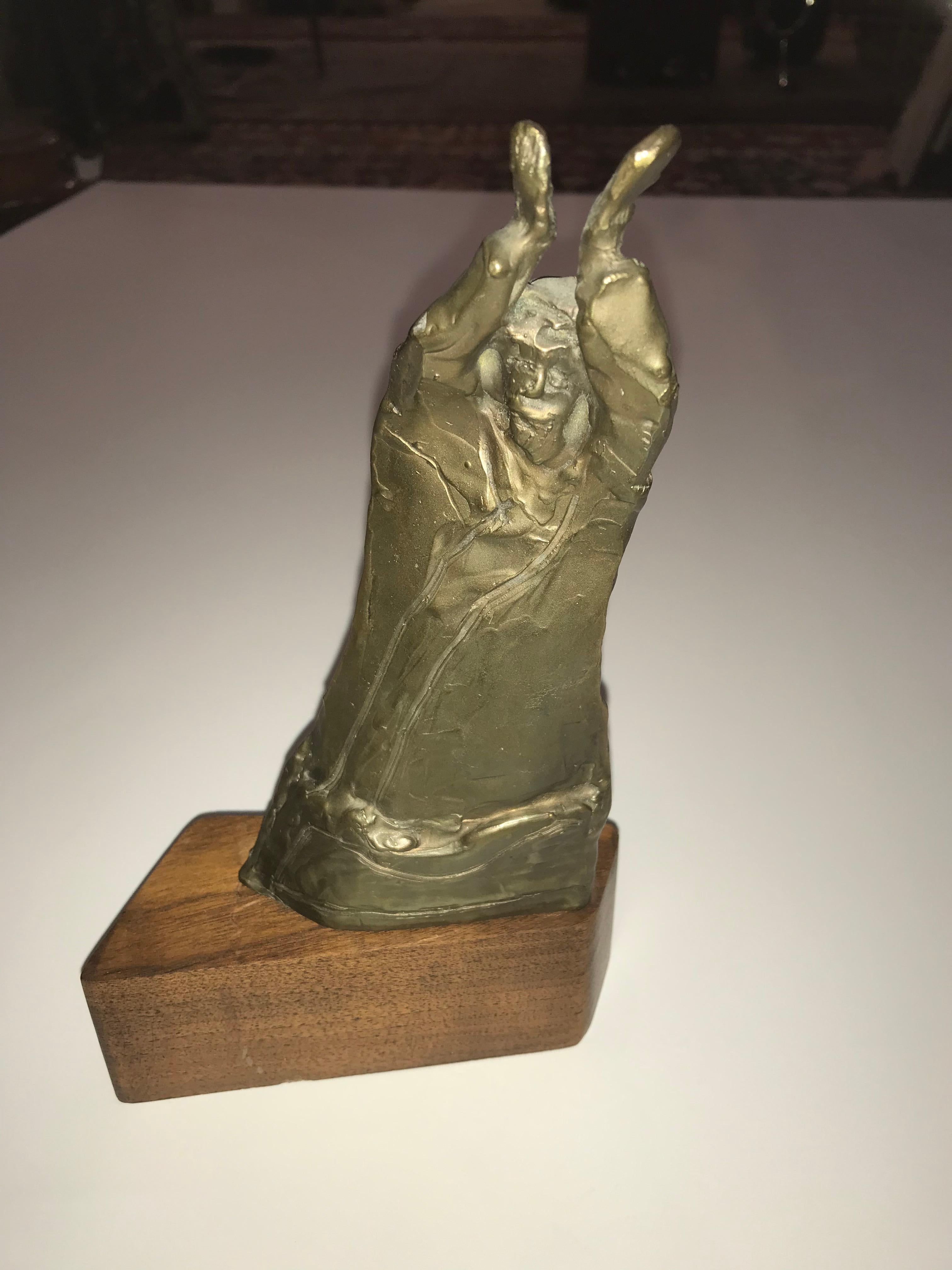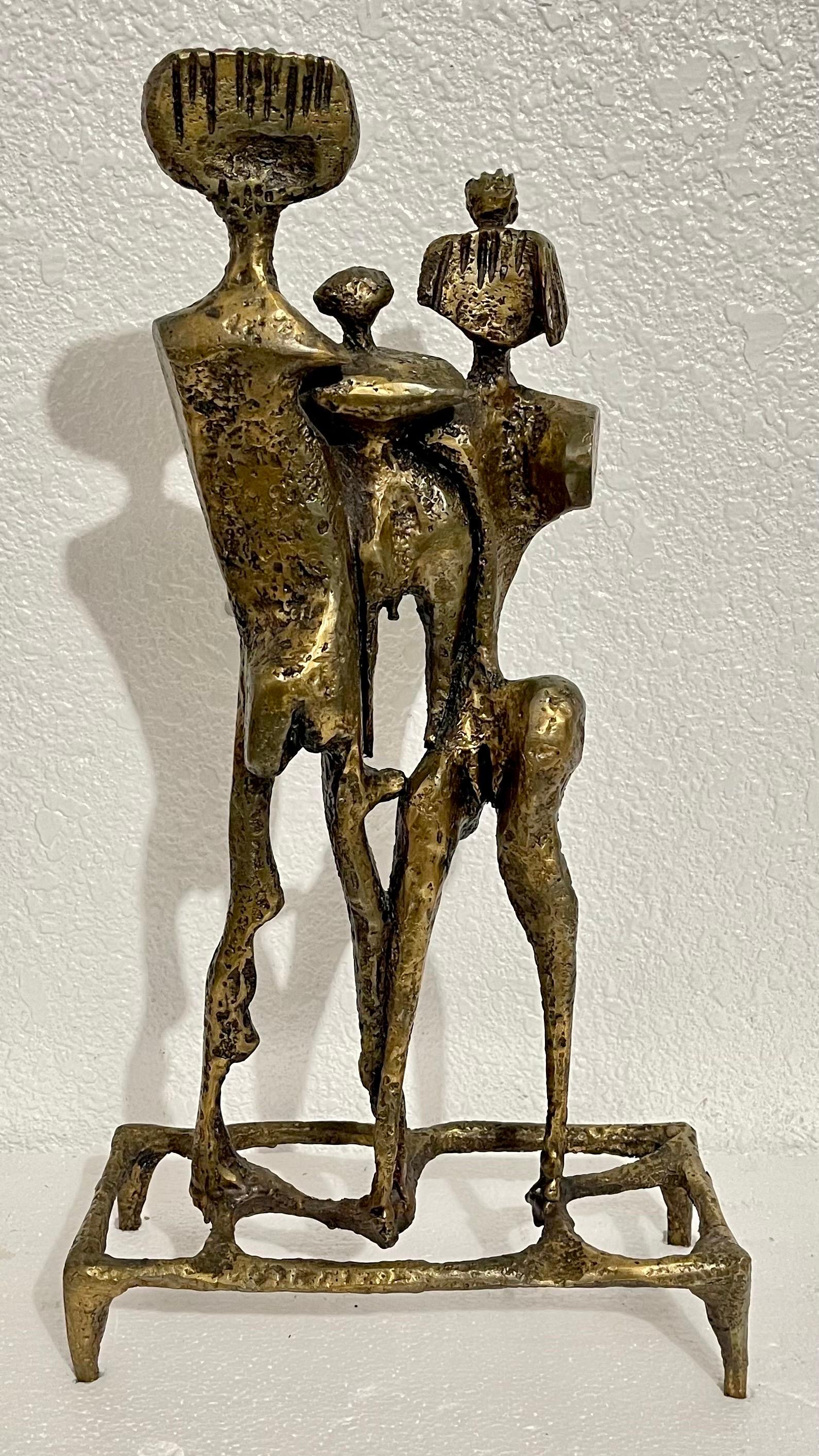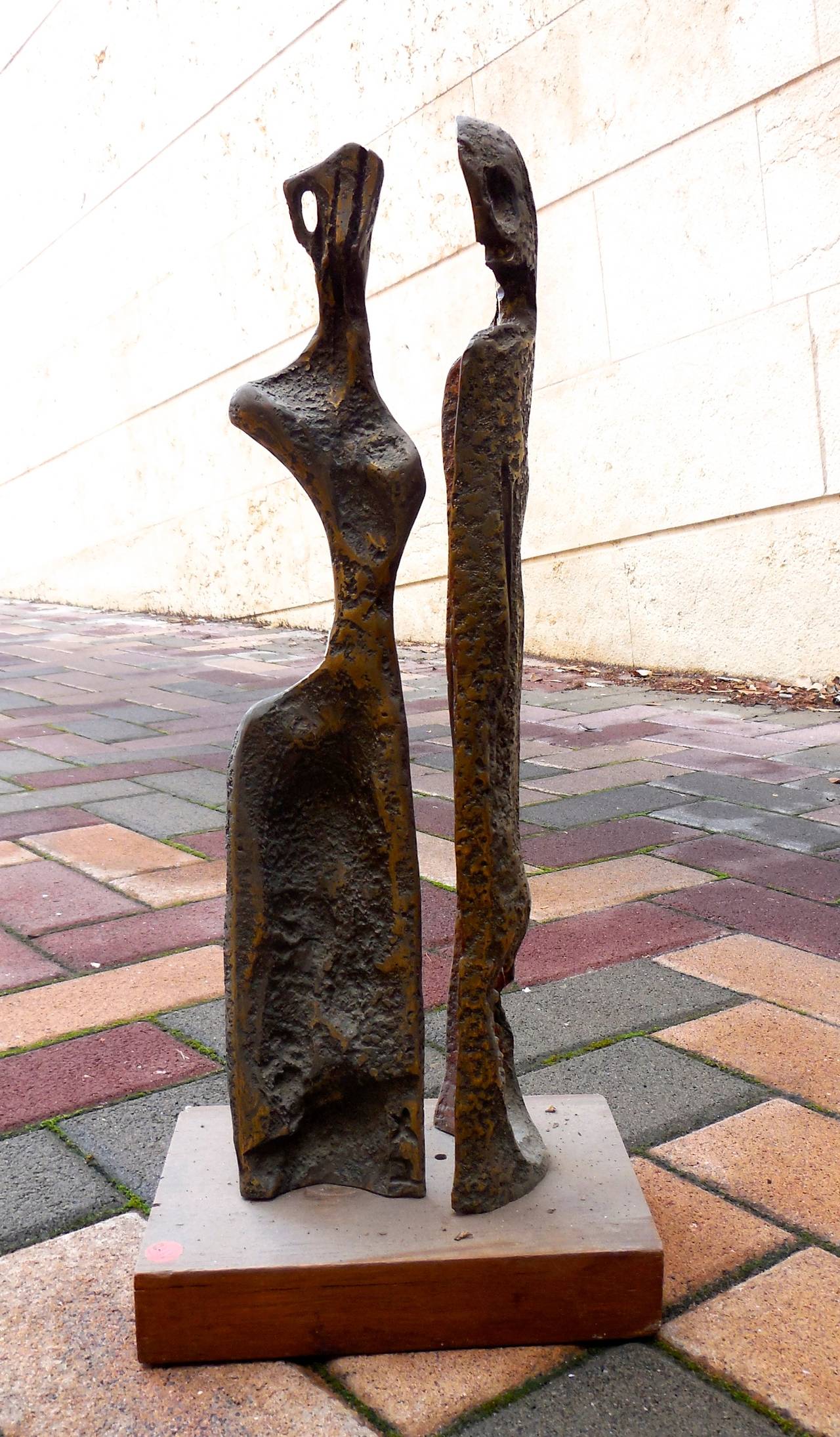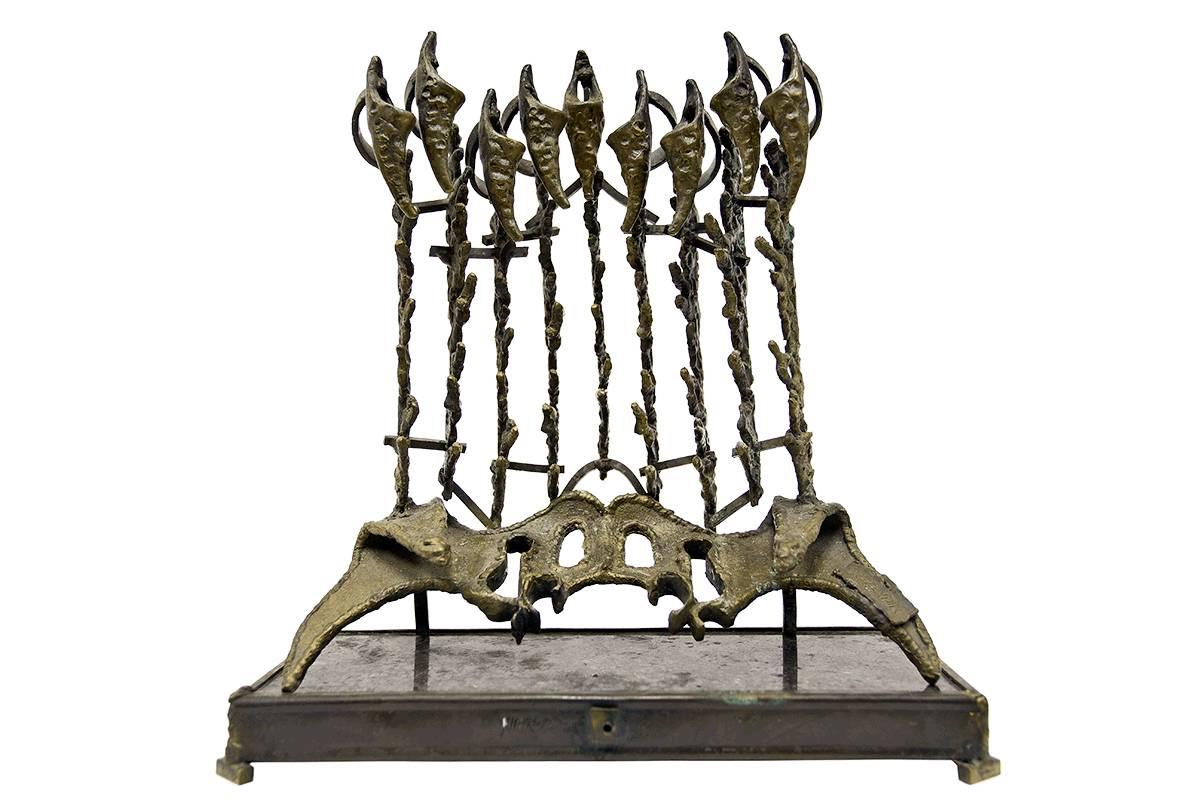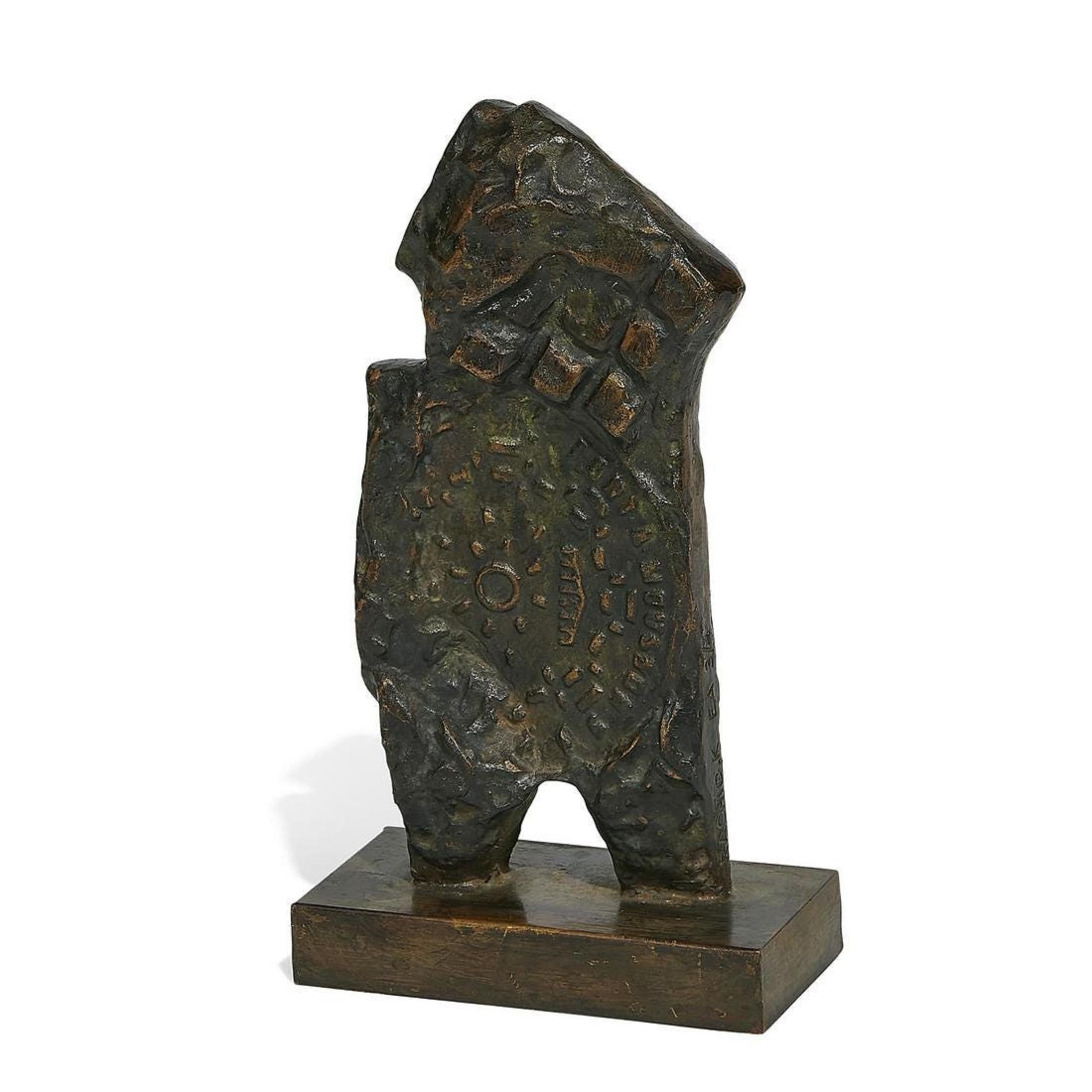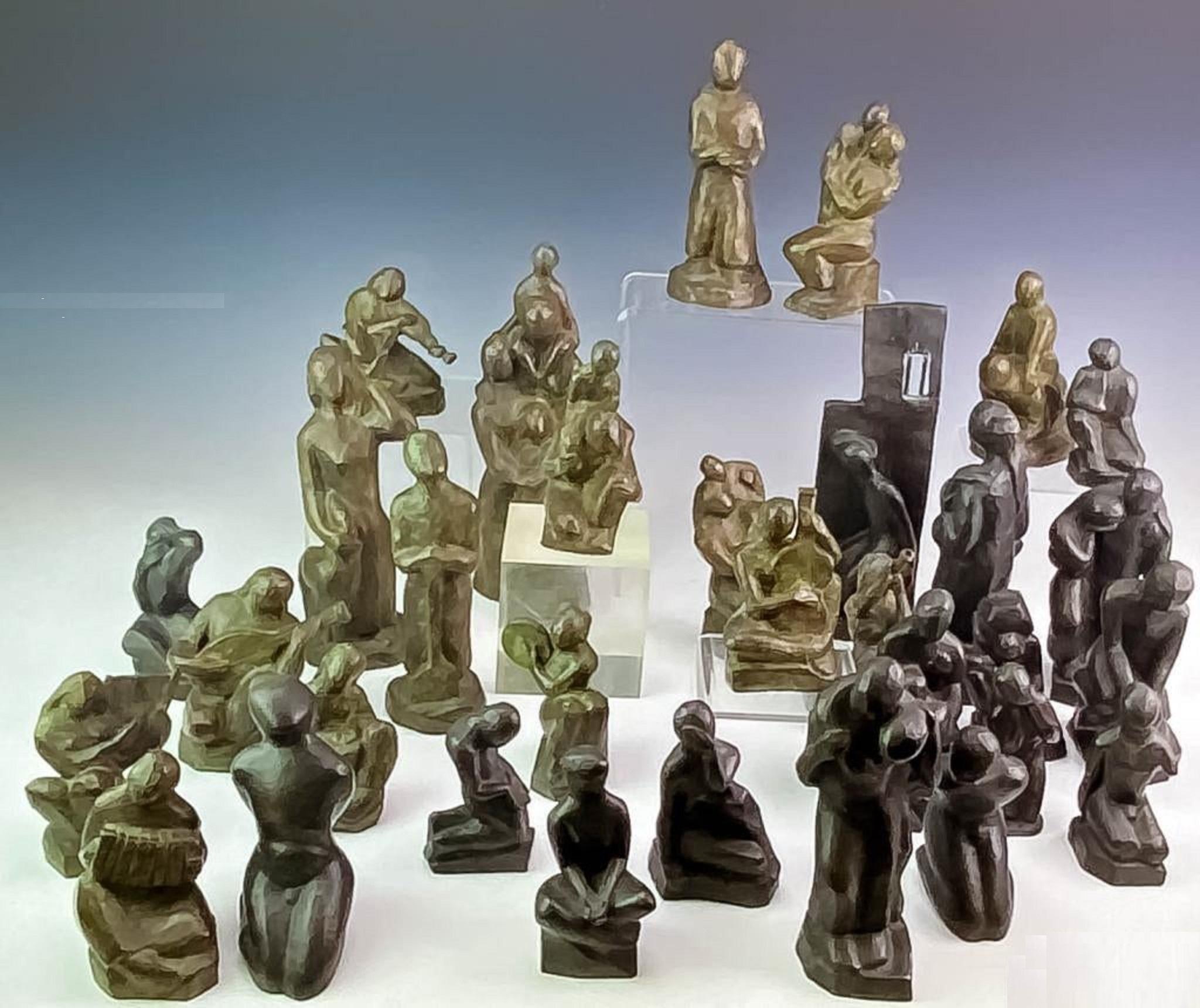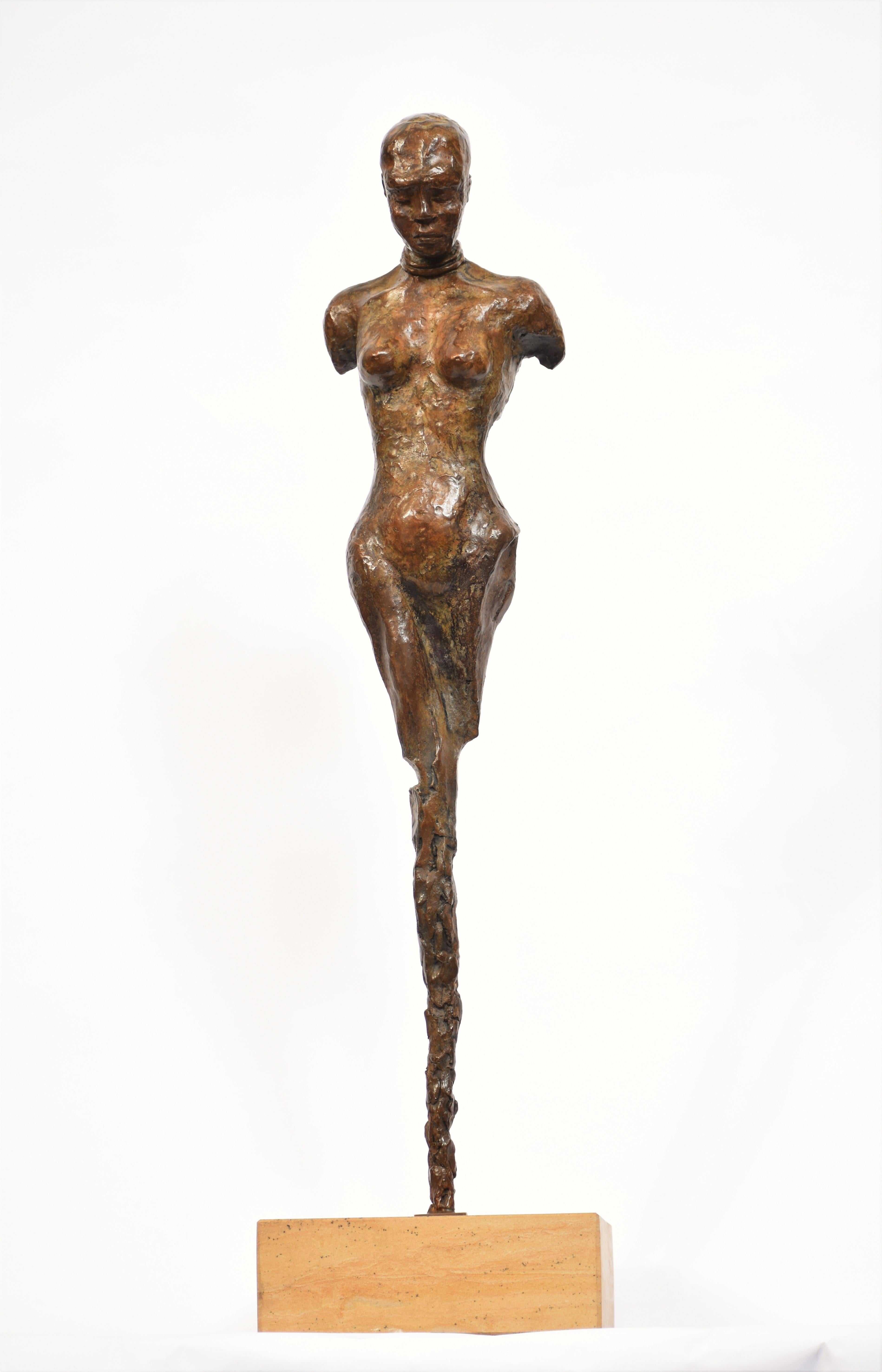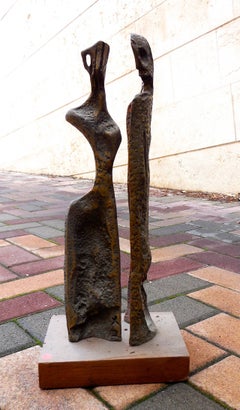
Two Figures (Art Brut Bronze Sculpture)
View Similar Items
Want more images or videos?
Request additional images or videos from the seller
1 of 6
Aharon BezalelTwo Figures (Art Brut Bronze Sculpture)
About the Item
- Creator:Aharon Bezalel (1925-2012, Afghan)
- Dimensions:Height: 17 in (43.18 cm)Width: 7 in (17.78 cm)Depth: 5 in (12.7 cm)
- Medium:
- Movement & Style:
- Period:
- Condition:
- Gallery Location:Surfside, FL
- Reference Number:1stDibs: LU382181332
About the Seller
4.9
Platinum Seller
These expertly vetted sellers are 1stDibs' most experienced sellers and are rated highest by our customers.
Established in 1995
1stDibs seller since 2014
1,541 sales on 1stDibs
Typical response time: 1 hour
More From This SellerView All
- Rare Aharon Bezalel Israeli Gilt Modernist Bronze Sculpture SuiteBy Aharon BezalelLocated in Surfside, FLThe width dimensions are variable. the tallest height is 11.5 inches. Family group. A suite of three bronze sculptures. Aharon Bezalel (born Afghanistan 1926) Born in Afghanistan in 1926 and immigrated to Israel at an early age. As a youth was engaged as a silversmith and craftsman, and was a student of the sculptor Zev Ben-Zvi from whom he absorbed the basic concepts of classic and modernist art and interpreted, according to them, ideas based on ancient Hebrew sources. Aharon Bezalel works and resides in Jerusalem, he taught art for many years. “I saw myself as part of this region. I wanted to find the contact between my art and my surroundings. Those were the first years of Jean Piro’s excavations at the Beer-Sheba mound. They found there, for example, the Canaanite figurines that I especially liked and that were an element that connected me with the past and with this place.” “…a seed and sperm or male and female. These continue life. The singular, the individual alone, cannot exist; I learned this from my father who dabbled with the Kabbalah.” (Aharon Bezalel, excerpt from an interview with David Gerstein) “The singular in Aharon Bezalel’s work is always potentially a couple if not a threesome[…] the one is also the many: when the individual is revealed within the group he will always seek a huddling, a clinging together. The principle of modular construction is required by this perception of unity and multiplicity, as modular construction in his work is an act of conception or defense. Two poles of unity, potentially alone, exist in A. Bezalel’s world: From a formal, sculptural sense these are the sphere and pillar, metaphorically these are the female in the final stages of pregnancy and the solitary male individual. Sphere-seed-woman; Pillar-strand-man. The disproportional, small heads in A. Bezalel’s figures leave humankind in it’s primal physical capacity. The woman as a pregnancy or hips, the man as an aggressive or defensive force, the elongated chest serves as a phallus and weapon simultaneously. (Gideon Ofrat) EIN HAROD About the Museum's Holdings: Israeli art is represented by the works of Reuven Rubin, Zaritzky, Nahum Gutman, Mordechai Ardon, Aharon Kahana, Arie Lubin, Yehiel Shemi, Yosl Bergner and others. The graphic arts collection contains drawings and graphic works by Pissaro, Modigliani, Pascin, Chagall (almost all of his graphic work), and numerous other artists. The sculpture collection includes works by Jewish sculptors from all over the world including leading Israeli sculptors; Ben Zvi, Lishansky, David Palombo, Yehiel Shemi, Aharon Bezalel and Igael Tumarkin. Many Jewish sculptors from all parts of the world, beginning with Antokolski, are represented in the collection. In the sculpture courtyard there are works by Chana Orloff, Jacob Epstein (the works he bequeathed to the Museum), Glicenstein, Loutchansky, Constant and Indenbaum from Western Europe; Glid from Yugoslavia; Zorach, Gross and Harkavy from the United States; and most of the outstanding sculptors of Israel : Ben-Zvi, Lishansky, Ziffer, Lehmann, Feigin, Sternschuss, Palombo ( who executed the iron gate...Category
1970s Expressionist Abstract Sculptures
MaterialsBronze
- Rare Welded Menorah Judaica Jewish Brutalist Candelabra Sculpture Chaim HendinBy Chaim HendinLocated in Surfside, FLIn this Menorah Chaim Hendin takes a personal approach, and turns it into a more anatomical, almost pelvic, looking piece of artwork. The sculpture is rich in texture and the candle ...Category
1970s Expressionist Abstract Sculptures
MaterialsMarble, Bronze
- Two Figures (Art Brut Bronze Sculpture)By Aharon BezalelLocated in Surfside, FLAharon Bezalel (born Afghanistan 1926) Born in Afghanistan in 1926 and immigrated to Israel at an early age. As a youth was engaged as a silversmith and craftsman, and was a student of the sculptor Zev Ben-Zvi from whom he absorbed the basic concepts of classic and modernist art and interpreted, according to them, ideas based on ancient Hebrew sources. Aharon Bezalel works and resides in Jerusalem, he taught art for many years. “I saw myself as part of this region. I wanted to find the contact between my art and my surroundings. Those were the first years of Jean Piro’s excavations at the Beer-Sheba mound. They found there, for example, the Canaanite figurines that I especially liked and that were an element that connected me with the past and with this place.” “…a seed and sperm or male and female. These continue life. The singular, the individual alone, cannot exist; I learned this from my father who dabbled with the Kabbalah.” (Aharon Bezalel, excerpt from an interview with David Gerstein) “The singular in Aharon Bezalel’s work is always potentially a couple if not a threesome[…] the one is also the many: when the individual is revealed within the group he will always seek a huddling, a clinging together. The principle of modular construction is required by this perception of unity and multiplicity, as modular construction in his work is an act of conception or defense. Two poles of unity, potentially alone, exist in A. Bezalel’s world: From a formal, sculptural sense these are the sphere and pillar, metaphorically these are the female in the final stages of pregnancy and the solitary male individual. Sphere-seed-woman; Pillar-strand-man. The disproportional, small heads in A. Bezalel’s figures leave humankind in it’s primal physical capacity. The woman as a pregnancy or hips, the man as an aggressive or defensive force, the elongated chest serves as a phallus and weapon simultaneously. (Gideon Ofrat) EIN HAROD About the Museum's Holdings: Israeli art is represented by the works of Reuven Rubin, Zaritzky, Nahum Gutman...Category
1960s Expressionist Abstract Sculptures
MaterialsBronze
- Large Aharon Bezalel Israeli Modernist Bronze Brutalist Puzzle Sculpture FiguresBy Aharon BezalelLocated in Surfside, FLAharon Bezalel (Afghani-Israeli, 1925-2012) 1984 Edition 4/9 Family Grouping Hand signed in Hebrew with initials and in English Movable figures that fit together like puzzle pieces in solid cast bronze with original patina on a lucite bench base. 23 X 19 X 6 base is 24 X 6 X 6 Aharon Bezalel (born Afghanistan 1926) Born in Herat, Afghanistan in 1926 and immigrated to Israel at an early age. His father, Reuven Bezalel, was a rabbi and kabbalist. As a youth Aharon studied gold and silver casting as well as applied arts and worked in these fields as a silversmith and judaica craftsman, and was a student of the sculptor Zev Ben-Zvi at the Bezalel Academy for Art & Design where he also studied with Isidor Ascheim and Mordecai Ardon. There he absorbed the basic concepts of classic and modernist art and interpreted, according to them, ideas based on ancient Hebrew sources. He also studied miniature carving with the artists Martin and Helga Rost applying himself at their workshop. Aharon Bezalel worked and resided in Jerusalem, he taught art for many years. His sculptures - works of wood, bronze, aluminum, Plexiglas - were shown at his studio in Ein Kerem. “I saw myself as part of this region. I wanted to find the contact between my art and my surroundings. Those were the first years of Jean Piro’s excavations at the Beer-Sheba mound. They found there, for example, the Canaanite figurines that I especially liked and that were an element that connected me with the past and with this place.” “…a seed and sperm or male and female. These continue life. The singular, the individual alone, cannot exist; I learned this from my father who dabbled with the Kabbalah.” (Aharon Bezalel, excerpt from an interview with David Gerstein) “The singular in Aharon Bezalel’s work is always potentially a couple if not a threesome, the one is also the many: when the individual is revealed within the group he will always seek a huddling, a clinging together. The principle of modular construction is required by this perception of unity and multiplicity, as modular construction in his work is an act of conception or defense. His work bears a similarity to Berrocal as well as affinities to Henry Moore, Lynne Chadwick and Kenneth Armitage. Two poles of unity, potentially alone, exist in A. Bezalel’s world: From a formal, sculptural sense these are the sphere and pillar, metaphorically these are the female in the final stages of pregnancy and the solitary male individual. Sphere-seed-woman; Pillar-strand-man. The disproportional, small heads in A. Bezalel figures leave humankind in it’s primal physical capacity. The woman as a pregnancy or hips, the man as an aggressive or defensive force, the elongated chest serves as a phallus and weapon simultaneously. (Gideon Ofrat) EIN HAROD About the Museum's Holdings: Israeli art is represented by the works of Reuven Rubin, Zaritzky, Nahum Gutman...Category
Mid-20th Century Expressionist Abstract Sculptures
MaterialsBronze
- Large Aharon Bezalel Israeli Modernist Bronze Brutalist Puzzle Sculpture FiguresBy Aharon BezalelLocated in Surfside, FLAharon Bezalel (Afghani-Israeli, 1925-2012) Family Grouping Hand signed in with initials in English Figures fit together like puzzle pieces in solid cast bronze with original patina. Aharon Bezalel (born Afghanistan 1926) Born in Herat, Afghanistan in 1926 and immigrated to Israel at an early age. His father, Reuven Bezalel, was a rabbi and kabbalist. As a youth Aharon studied gold and silver casting as well as applied arts and worked in these fields as a silversmith and judaica craftsman, and was a student of the sculptor Zev Ben-Zvi at the Bezalel Academy for Art & Design where he also studied with Isidor Ascheim and Mordecai Ardon. There he absorbed the basic concepts of classic and modernist art and interpreted, according to them, ideas based on ancient Hebrew sources. He also studied miniature carving with the artists Martin and Helga Rost applying himself at their workshop. Aharon Bezalel worked and resided in Jerusalem, he taught art for many years. His sculptures - works of wood, bronze, aluminum, Plexiglas - were shown at his studio in Ein Kerem. “I saw myself as part of this region. I wanted to find the contact between my art and my surroundings. Those were the first years of Jean Piro’s excavations at the Beer-Sheba mound. They found there, for example, the Canaanite figurines that I especially liked and that were an element that connected me with the past and with this place.” “…a seed and sperm or male and female. These continue life. The singular, the individual alone, cannot exist; I learned this from my father who dabbled with the Kabbalah.” (Aharon Bezalel, excerpt from an interview with David Gerstein) “The singular in Aharon Bezalel’s work is always potentially a couple if not a threesome, the one is also the many: when the individual is revealed within the group he will always seek a huddling, a clinging together. The principle of modular construction is required by this perception of unity and multiplicity, as modular construction in his work is an act of conception or defense. His work bears a similarity to Berrocal as well as affinities to Henry Moore, Lynne Chadwick and Kenneth Armitage. Two poles of unity, potentially alone, exist in A. Bezalel’s world: From a formal, sculptural sense these are the sphere and pillar, metaphorically these are the female in the final stages of pregnancy and the solitary male individual. Sphere-seed-woman; Pillar-strand-man. The disproportional, small heads in A. Bezalel figures leave humankind in it’s primal physical capacity. The woman as a pregnancy or hips, the man as an aggressive or defensive force, the elongated chest serves as a phallus and weapon simultaneously. (Gideon Ofrat) EIN HAROD About the Museum's Holdings: Israeli art is represented by the works of Reuven Rubin, Zaritzky, Nahum Gutman...Category
Mid-20th Century Expressionist Abstract Sculptures
MaterialsBronze
- Rachid Khimoune French Algerian Arab Art Brut Bronze Sculpture Abstract FigureLocated in Surfside, FLRachid Khimoune (Algerian, b. 1953) Les enfants du monde bronze. signed and numbered artist's edition of 4 foundry mark - L. Cappe 7.5 x 4.63 x 2.38 Overall: 8.25 x 4.63 x 2.38 RACHID KHIMOUNE, Algerian-French artist and sculptor. Born in 1953 in Decazeville, France. Lives and works in Paris, France. Rachid Khimoune graduated from the School of Art of Paris in 1974; he initially started to work with painting before choosing sculpture. In 1980 he won the first prize of the Foundation of France. He works in an Art Brut, Naif art style similar to Jean Dubuffet and Enrico Baj. Being the recipient of numerous prestigious awards and an extensive oeuvre, Rachid Khimoune has been exhibiting since 1975 and his work can be found in several museums, and public and private collections. The artist behind the project Rachid Khimoune, has been responsible for a number of major, successful public art installations in France. Most famously, the installation close to the Bibliothèque Nationale (National Library) ‘Les Enfants du Monde’ (The Children of the World). Rachid’s newer works are masks and totems cast in bronze: poetic images forged in a furnace. Rachid uses discarded objects and disused parts of machines, to create new human and animal forms. Here his interest in metal-working and Arab art-African art coincides with the assemblage of found objects; one mask is a collage constituted by a large model of the Eiffel Tower stuck into the end of a trumpet. Another has a jerry-can for a face, and the golden patina and surface-working of the bronze does not dispel the idea which this image creates: of a human mouth drinking oil. Born in France to parents from Algeria, Khimoune embraces the role of the artist as a global citizen, using art as a universal language. Select Awards Lauréat du Prix de la Fondation de France (1980) Chevalier des Arts et Lettres (2002) Grande Médaille de la Ville de Paris (2004) Chevalier de la Légion d’Honneur (2007) EXHIBITIONS SOLO EXHIBITIONS 2017 Ar[T]senal, Dreux, France 2016 Musée Tavet Delacour, Pontoise, France 2015 Parvis de l’Hotel de ville, Paris 2015 Beirut Art Fair, Beyrouth, Liban 2015 Galerie Francoise Souchaud, Lyon 2014 Musée Rabelais, Seuilly, France 2013 Galerie Vallois...Category
20th Century Expressionist Abstract Sculptures
MaterialsBronze
You May Also Like
- Samburu Herdsman - African Tribe Sculpture in Bronze VerdigrisLocated in Pretoria, ZAMy interpretation of a Samburu herdsman stands as a sentinel of tradition, his life a tapestry woven with the threads of pastoral wisdom and the enduring spirit of the African savannah. The Samburu people of Kenya possess a deeply symbiotic relationship with elephants, observing and understanding them in remarkable ways that mirror their own societal structures. They share a common matriarchal social system with elephants, where both Samburu and elephant herds are led by a female elder who holds the knowledge and responsibility for the group's survival. This unique parallel has fostered a profound respect and protection for these majestic creatures within the Samburu culture. Samburu Herdsman, Limited edition of 24, Bronze sculpture on sandstone base in Bronze Verdigris, Height 65 cm including Sandstone base. Bronze sculpture using the lost was method. My art is inspired by Africa and it’s magnificent wildlife and people. My figurative East African tribal sculpture...Category
2010s Expressionist Figurative Sculptures
MaterialsBronze
- Zulu Warrior - African Bronze Sculpture - Limited EditionLocated in Pretoria, ZAZulu Warrior in Bronze with traditional patina. Limited edition of 24 (signed & numbered), Sculpture in Bronze Verdigris on Sandstone base. Height 70 cm including base. My art is ins...Category
2010s Expressionist Figurative Sculptures
MaterialsSandstone, Bronze
- HomodeusLocated in Spetses, GRInspired by the writings of historian Yuval Noah Harari, Homo Deus creates a vision of the future: of Man physically transformed by new technologies to the point of attaining a statu...Category
21st Century and Contemporary Expressionist Abstract Sculptures
MaterialsBronze
- Standing Man by Mildred KouzelLocated in Pasadena, CAOriginal Art Work By California Recent Artist Standing Man, 1981 Mildred Kouzel's first career was in nursing: she was an army nurse during World War II...Category
Mid-20th Century Expressionist Figurative Sculptures
MaterialsBronze
$1,200 Sale Price20% Off - Young Woman - Bronze Abstract Nude - Limited EditionLocated in Pretoria, ZAYoung Woman in bronze, abstract nude figurative bronze sculpture, limited edition of 24, height 64 cm including base, Sandstone base: approx 17 cm x 15 cm x 5 cm. Cast bronze using t...Category
2010s Expressionist Nude Sculptures
MaterialsSandstone, Bronze
- Maasai Warrior - African Sculpture in Bronze Verdigris - Limited EditionLocated in Pretoria, ZAMaasai Warrior in Bronze Verdigris on Sandstone base, limited edition of 24 (signed and numbered); H 76 cm including base. Having been a professional safari guide, my art is influenc...Category
2010s Expressionist Figurative Sculptures
MaterialsSandstone, Bronze
Recently Viewed
View AllMore Ways To Browse
Hebrew Bronze
Bronze Female Figurine
Kabbalah Art
Female And Male Abstract Art Sculpture
Male Youth Sculpture
Vintage Craftsman Saws
Vintage Craftsman Saw
Vintage Craftsman Chest
Modigliani Head
Bezalel Bronze
Palombo David
Jerusalem Gate
Bronze David Head
Vintage Couple Figurines
Orloff Chana
Gideon Rubin
Phallus Sculpture
Vintage Man And Woman Figurines
